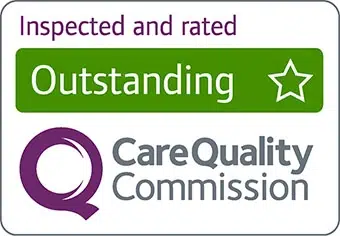What Is Verbal Dyspraxia?
Verbal dyspraxia is a learning difficulty that affects the ability to plan, coordinate, and execute the precise movements required for speech production. It is not a result of muscle weakness but rather a disruption in the brain’s ability to transmit signals to the speech muscles.
Individuals with verbal dyspraxia often have challenges producing clear speech, even though their cognitive and language skills are not affected. What’s more, their speech may be characterised by challenges in articulation and sound production, as well as challenges with imitating or sequencing speech sounds.
Verbal dyspraxia can vary in severity, with some individuals experiencing only mild challenges while others may have more significant difficulties.
Verbal Dyspraxia in Children
Verbal dyspraxia is most commonly diagnosed in children. Children may have challenges with pronouncing words accurately, forming complex speech, and sequencing sounds in the correct order.
Diagnosing developmental verbal dyspraxia in children can be complex, as its symptoms can overlap with other speech and language disorders. Early signs might include delayed onset of speech, limited vocabulary growth, and challenges with imitating speech sounds.
Early intervention is key, as a proper treatment strategy and targeted therapy during the developmental years can significantly improve a child’s speech abilities.
Verbal Dyspraxia in Adults
Although it is more commonly associated with children, verbal dyspraxia can also affect adults.
Whether it persists into adulthood or develops later in life, it can have a considerable impact on an individual’s communication abilities. Adults with verbal dyspraxia experience challenges with coordinating the precise muscle movements required for speech, leading to further challenges in forming clear speech.
Adults with verbal dyspraxia might experience challenges in articulating words, producing complex speech sounds, and maintaining consistent speech patterns.
It can have an immense social and emotional impact on adults, as effective communication is essential in various aspects of life. Speech therapy remains a crucial intervention for adults with verbal dyspraxia, focusing on improving speech planning and coordination, as well as providing strategies to enhance communication.

Signs and Symptoms of Verbal Dyspraxia
Verbal dyspraxia can manifest in various signs and symptoms. It’s important to note that if children or adults experience some of the symptoms listed below, it does not mean they have verbal dyspraxia. Consulting with a healthcare professional and getting a proper diagnosis is crucial.
Some of the more common symptoms of verbal dyspraxia include:
- Challenges with producing sounds
- Challenges with sequencing sounds or words
- Frequent mistakes or challenges when saying the same words
- Challenges with intonation (speaking in a monotone voice)
- Limited vocabulary
- Speaking slowly
- Using more pauses and fewer words
- Challenges with transitioning between different speech sounds
Recognising the signs of verbal dyspraxia is crucial for access to proactive support and strategies.

Signs in Early Childhood
In early childhood, signs of verbal dyspraxia, also known as childhood apraxia of speech, may become apparent as a child begins to develop speech and communication skills. Children often exhibit challenges in achieving expected speech milestones.
Early childhood signs of verbal dyspraxia include:
- Delayed onset of speech
- Challenges with producing consonant and vowel sounds
- Challenges with forming simple words and phrases
- Inconsistent speech errors
- Simplification of longer and more complex words
- Challenges with imitating speech
Recognising these signs and seeking appropriate support can significantly contribute to a child’s progress in speech and communication development.
Potential Causes and Risk Factors
The exact causes of verbal dyspraxia are not fully understood, but it is believed to result from a combination of genetic and neurological factors. Some children may have a family history of speech or language disorders, suggesting a genetic predisposition. Neurologically, verbal dyspraxia is thought to stem from difficulties in the brain’s ability to plan and coordinate the precise movements required for speech production.
Other potential contributing factors include premature birth, low birth weight, and other neurological differences such as Autism Spectrum Disorder. Brain injuries or trauma, including those during early childhood, can also be associated with verbal dyspraxia.
While these factors might contribute to the development of verbal dyspraxia, it’s important to note that the exact interplay among genetics, brain function, and other influences remains an ongoing area of research.
Diagnosis and Assessment
Diagnosing verbal dyspraxia involves a comprehensive assessment conducted by a speech and language therapist. Due to its complexity and potential overlap with other speech and language challenges, a thorough evaluation is crucial to accurately diagnose developmental verbal dyspraxia and develop a proper support plan.
The assessment typically includes a combination of standardised tests, clinical observations, and parent or caregiver interviews. A healthcare professional will evaluate the child’s speech sound production, oral motor skills, ability to imitate speech sounds and words, and overall communication skills. What’s more, they also look for patterns of inconsistency in speech sound errors and observe the child’s progress with familiar versus unfamiliar words.
In addition to formal assessments, the diagnostic process for verbal dyspraxia involves considering the child’s developmental history, medical background, and family history of speech and language challenges.
The collaboration between speech therapists, paediatricians, and other healthcare professionals is vital to ensure a comprehensive understanding of the child’s communication challenges.
Early Intervention Strategies
Early intervention is essential for addressing verbal dyspraxia. Implementing effective early intervention strategies can help children overcome speech challenges and facilitate their language development, ultimately improving their overall communication skills and quality of life.
Speech Therapy for Verbal Dyspraxia
Speech and language therapy plays a pivotal role in addressing verbal dyspraxia.
Speech therapists implement a variety of techniques tailored to the individual needs of the child. These may include repetitive and targeted exercises focusing on specific speech sounds, syllables, and words, as well as techniques to enhance breath control, oral motor coordination, and overall muscle strength.
This process of speech and language therapy involves consistent practice, multisensory approaches, and collaboration between therapists, parents, and caregivers to create a supportive environment for the child’s speech progress.
Parent Involvement and Home-Based Activities
Parents or caregivers can extend therapy strategies into the child’s daily life, reinforcing progress and accelerating improvement. This might involve practising speech exercises, engaging in language-rich activities like reading aloud and storytelling, and incorporating speech-enhancing games into routine interactions.
It’s essential to remember that consistency is key. Regular practice at home reinforces the skills learned in therapy sessions. What’s more, by actively participating in their child’s treatment journey, parents can foster a nurturing environment that promotes language development and empowers the child to overcome the challenges posed by verbal dyspraxia.
Working With Educators and Therapists
Educators can implement strategies recommended by speech therapists within the classroom, fostering an inclusive environment that supports the child’s communication development. Regular meetings and progress updates enable therapists and educators to align their approaches, share insights, and make necessary adjustments to optimise the child’s learning experience.
This holistic teamwork enhances the child’s ability to generalise speech skills across various contexts and maximises their potential for successful communication and academic progress despite the challenges posed by verbal dyspraxia.

How Leafcare Can Help You In Tackling Dehydration
With a dedicated team of support workers and in-house speech-language therapists, Leaf Complex Care is committed to providing a nurturing environment where individuals with verbal dyspraxia can thrive.
We believe every individual deserves a place in the community, with equal education and working opportunities. Our approach is focused on tailoring interventions to each individual’s strengths and challenges. What’s more, our skilled support workers utilise person-centred strategies tailored to the unique needs, wants, and requirements of the people we serve.
If you are looking for a reliable and professional care provider, Lead Complex Care is the right choice for you. We provide CQC-regulated care in Bristol, Exeter, Slough, Somerset, and the Midlands.
To learn more about how we support individuals with verbal dyspraxia, contact us today.


















